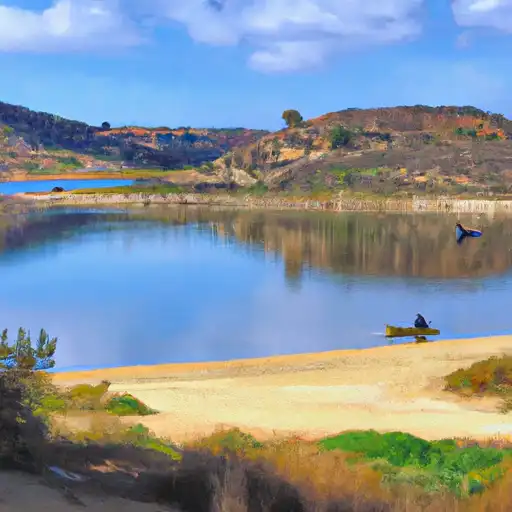2026-01-04T17:00:00-07:00
The National Weather Service in Denver has issued a Fire Weather Watch for wind and low relative humidity, which is in effect from Sunday morning through Sunday afternoon. * AFFECTED AREA...Fire Weather Zones 214, 216, 239, 240 and 241. * TIMING...From late Sunday morning through Sunday afternoon. * WINDS...West 10 to 20 mph with gusts 30 to 45 mph. * RELATIVE HUMIDITY...12 to 18%. * IMPACTS...Conditions will be favorable for rapid fire spread. Avoid outdoor burning and any activity that may produce a spark and start a wildfire.
Summary
Total streamflow across the
Santa Clara River
was last observed at
73
cfs, and is expected to yield approximately
145
acre-ft of water today; about 244%
of normal.
River levels are high.
Average streamflow for this time of year is
30 cfs,
with recent peaks last observed
on
2023-03-16 when daily discharge volume was observed at
6,163 cfs.
Maximum discharge along the river is currently at the
Santa Clara River Abv Baker Res Nr Central
reporting a streamflow rate of 72.9 cfs.
This is also the highest stage along the Santa Clara River, with a gauge stage of
11.98 ft at this location.
This river is monitored from 3 different streamgauging stations along the Santa Clara River, the highest being situated at an altitude of 6,630 ft, the
Santa Clara River Near Pine Valley.
River Details
| Last Updated | 2026-01-02 |
| Discharge Volume | 145 ACRE-FT |
| Streamflow |
72.9 cfs
+31.4 cfs (+75.66%) |
| Percent of Normal | 243.59% |
| Maximum |
6,163.3 cfs
2023-03-16 |
| Seasonal Avg | 30 cfs |
River Streamflow Levels
| Streamgauge | Streamflow | Gauge Stage | 24hr Change (%) | % Normal | Minimum (cfs) | Maximum (cfs) | Air Temp | Elevation |
|---|---|---|---|---|---|---|---|---|
|
Santa Clara River Near Pine Valley
USGS 09408400 |
29 cfs | 3.23 ft | 257.93 | |||||
|
Santa Clara River Abv Baker Res Nr Central
USGS 09409100 |
73 cfs | 11.98 ft | 75.66 | |||||
|
Santa Clara River At St. George
USGS 09413000 |
19 cfs | 7.27 ft | 94.5 |
Seasonal Discharge Comparison
Maximum Streamflow Discharge
Streamflow Elevation Profile
The Santa Clara River (Spanish: Río Santa Clara) is 83 miles (134 km) long, and is one of the most dynamic river systems in Southern California. The river drains parts of four ranges in the Transverse Ranges System north and northwest of Los Angeles, then flows west onto the Oxnard Plain and into the Santa Barbara Channel of the Pacific Ocean.
The watershed has provided habitat for a wide array of native plants and animals and has historically supplied humans with water, fish, and fertile farmland. The northern portion of the watershed was home to the Tataviam people while the southern portion was occupied by the Chumash people. Much of the Santa Clara River Valley is used for agriculture which has limited the use of structural levees to separate the natural floodplain from the river. Although it is one of the least altered rivers in Southern California, some levees exist where the river flows through areas of significant urban development.

 Site Of St Francis Dam Disaster To Seco Canyon At The Nf Boundary
Site Of St Francis Dam Disaster To Seco Canyon At The Nf Boundary
 Castaic Lagoon
Castaic Lagoon
 Castaic Lake
Castaic Lake
 Piru Lake
Piru Lake